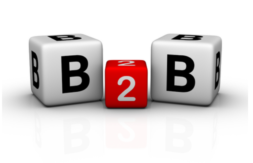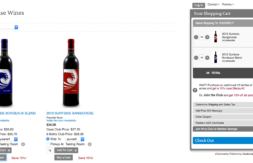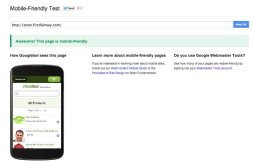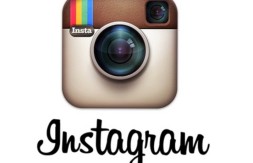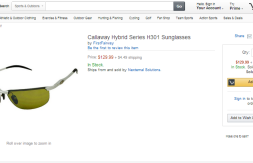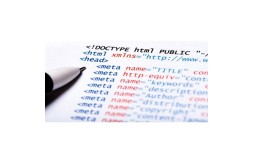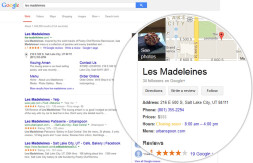Optimize Your Facebook Page to Drive Sales

When you’re looking to drive more traffic to your eCommerce site, no social media platform will do the trick quite like Facebook. In fact, in the first quarter of 2013, Facebook was responsible for a whopping 55% of all eCommerce specific social media referrals. Of course, not all of those referrals converted to sales, but you can bet they at least created buzz and brand awareness or even deeper conversions, like signing up for regular newsletter updates.
All together, that means that if you don’t know whether or not your Facebook page is optimized to drive sales, you may be missing out on vital marketing. To remedy this, we highly recommend starting with this helpful flowchart, Facebook for Small Businesses, which will help you determine both what you’re missing and where to get started. Below, we’ll discuss a number of techniques for seamlessly integrating your Facebook page and website and optimizing each for both mobile and search purposes.
1. Keep it Visual
First things first: you’ve got to make that Facebook page look like your Facebook page. That means taking the time to upload your logo and a good banner — one that either communicates your company colors or is simply compelling in a manner that reflects your business. A funny snapshot might do that, as would a striking photo of flowers, as long as it syncs with your brand and tone. The idea is to make your Facebook less of a page and more of a lifestyle.
From there, “keep it visual” means embracing the fact that most people who browse Facebook (and the internet at large, for that matter), aren’t looking to read long blocks of text, even if they describe a mind blowing product or “one neat trick”. Instead, you’ll greatly increase your Click Through Rate (CTR) if your posts center instead on images, infographics and videos, all of which can really run the gamut. The obvious move is to post high-quality photos of your products with a link to your store. However, photos are also great for giving your fans a glimpse of the product in production, or a look behind scenes at company headquarters. Similarly, product features are great for videos, but so, too, are instructional how-to videos, a fun look at your products in action, or goofy employee videos that detail a day in the office.
And of course, the ever popular infographic is also an excellent technique, allowing you to provide answers to your customers’ most complicated questions in an easy to follow format. Whether your infographic relates directly to your core services or illustrates something more tangential that you know your target audience will be interested in, a good one is sure to pull eyes in.
Together, visual techniques will increase your engagement rates both on Facebook directly and on your website, as intrigued customers will be more likely to explore the depths of all that your site has to offer.
2. Understand What Makes an Engaging Status Update
It’s been said a million and one times, and yet still countless businesses continue to confuse their Facebook page with direct advertising. It’s not; rather, Facebook is a truly social platform, and while it’s fine to run a promotion or talk directly about your products, it’s important to keep these kinds of updates closer in tone to that of a friend rather than that of an advertiser, and to alternate such updates with more casual and fun ones. In fact, given Facebook’s algorithm, which makes it so that even fans of your page won’t continue see your posts unless they regularly engage with them, you should try to make at least 50% of your posts purely about engagement, and nothing else.
That means taking the time to really craft powerful status updates rather than just slapping something up there. Photos, as explored above, make excellent meat for sharing, but so, too, do fun facts and links to relevant, inspiring or expert articles. Posing a question to your followers can also be effective and informative, while fill-in-the-blanks are downright fun — though be warned you have to be careful with these so you don’t get inappropriate answers. For a clothing company a good example might be, “The best dress I ever wore…”, and then your fans would write a story about their favorite dress. “Vs” questions can also be quite engaging, especially when they’re about controversial topics, like “Mac or PC?”
Seeing the thread here? Your fans actually want to help you fill up your Facebook feed; the more you can encourage them to do so, the better.
3. Gamify the Experience
Your Facebook page will really pop if it feels like a game to your fans. Time sensitive discounts, contests, and gift card giveaways are all great ways to achieve this. Caption contests, for instance, play on that visual element, while also encouraging your users to get creative. Receiving a discount for helping you gain a certain number of likes is also highly motivating, as is contributing a video, photo or drawing of their own that entrants then must share on their own social media feeds in order to win. Not only are these techniques highly effective at encouraging fans to actively interact with your brand, but they’re also killer for spreading the word. Also keep in mind that the more specific you can make your efforts to Facebook (as opposed to other social sites), the better, as it imparts a feeling of exclusivity.
4. Interact With Your Following
Despite what some unsavory people would say, the goal of a Facebook business page isn’t to have the most likes ever; it’s to create a community of people who love what you do. That starts with growing your page strategically from the get go. Don’t invite just anybody to like your page. Start with friends and family you know will be actively interested. From there, add new customers as you go.
More than anything, a passionate community grows when you’re paying attention to what they say. Did a fan pay you a compliment? Great! Respond as quickly as you can, and perhaps even offer them a discount on their next purchase or for writing a review on your site. Did someone leave a complaint? Respond to that quickly too, offering empathy and some kind of remedy. Make sure that you also dig into the conversations your fans have on your posts, as well as paying attention to what’s said in the comments. Not only will this further help you establish your accessibility and voice, but it can also provide unique insight into the minds of your current or potential customers.
Best of all, take time out of every week to feature one of your fans, whether that’s simply through a mention or it’s something deeper, like telling the full journey they had with your company. Who doesn’t like feeling like a star?
5. Pay for a Promoted Post or Ad
The effectiveness of promoted posts or ads is debated, but used sparingly, they can make somewhat of a dent for the right businesses. For the most part, it’s best to save promoted posts for things you really want to get eyeballs on, like a new product launch, and to be as specific as possible as your target audience. This if course requires knowing your target audience in the first place, so make sure you do!
In fact, running an ad first can be a great way to do so, as you can’t create one without drilling down into hyper specific demographics. It’s best to view both ads and promoted posts as experiments. Give each a limited budget and a limited run time (4 to 5 days initially is best) so that you have enough data to go on and then do some deep analysis and make tweaks accordingly. With ads in particular, it’s important to run more than 1 at a time so you have something to compare each data point to.
6. Don’t Forget the Basics
Last but not least, it’s important not to forget the basics in all of this. At least some percentage of potential customers will visit your page simply looking for ways to become customers now, not sign up for your newsletter or receive your updates. As such, make sure your page is filled out and that you’ve made it clear how to contact you, what your website is and where any brick and mortar stores may be located. There’s nothing more frustrating than not being able to find this on a Facebook page you’re already ready to buy from.
The Takeaway
Used strategically, Facebook is an excellent place to grow a passionate community around your brand, which in turn is sure to drive sales. Now the real question is, what will your first post be?

